Greenbrier Ultras hosted three distances (100M, 50M, 50K) in its namesake state park in Boonesboro, MD last weekend. The 100 mile race stared at 2pm, the 50 mile at midnight, and the 50K at 8am the next morning. The RD, Kevin Sayers, is gearing the race for first time 100 milers by providing a generous 33 hour time limit. He’s also handing out revenge cards if you DNF, which will provide a 50% discount if you come back to try again.
The 2pm start time is probably the most unique part of the race. Kevin explained that this is partially to force everyone to run through the night and partly to cut out all the waiting around you typically do since most people arrive to a race the day before. I loved this as it allowed me to get a full night’s sleep in my own bed with a late wakeup rather than the normal 5-6 hours of fitful slumber I manage before getting up hours before dawn.
The course itself was a 7.5 mile clockwise loop around the park that you run 13 times. This was preceded by three short 1 mile loops immediately around the lake to get us the fully allotted 100 miles. The trails are best described as mildly technical.

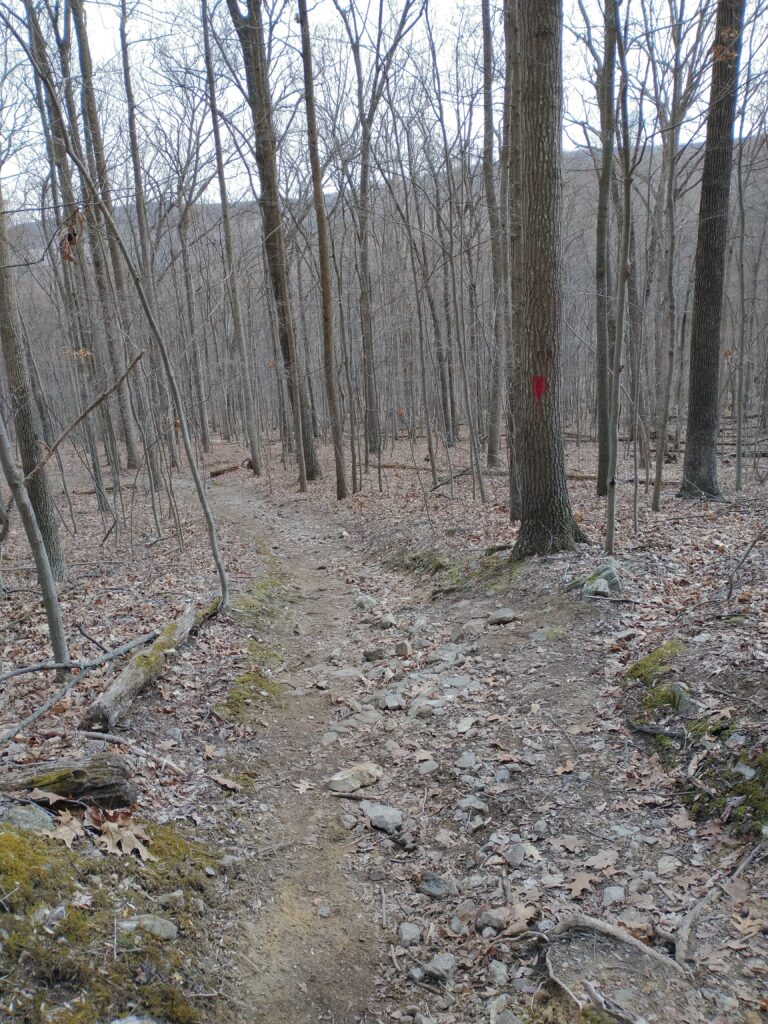
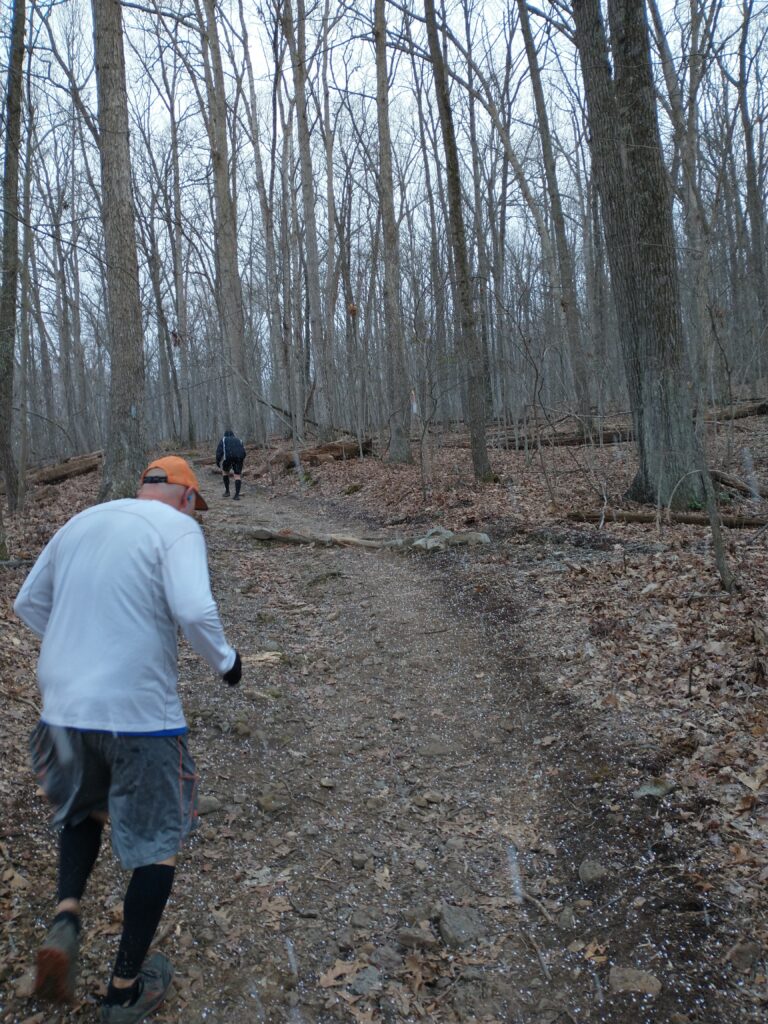

The trails themselves are fairly Goldilocks though as far as east coast hundreds go. Not too hard (see Massanutten, Eastern States) and not too easy (C&O Canal, Pine Creek). The real challenge of Greenbrier though is the short loop format, which makes it very easy to quit when things get hard. And it will definitely get hard. The best advice I can give for this race is to come into the start/finish with a short list of the 3-4 things you need to accomplish (i.e. food, fluids, headlamp, fix feet). Get them addressed as quickly as possible and then get out of that tent. The more time you spend there, the more likely you’ll be handed a Revenge Card. Nobody wants that so plan ahead how handle the convenience of quitting.
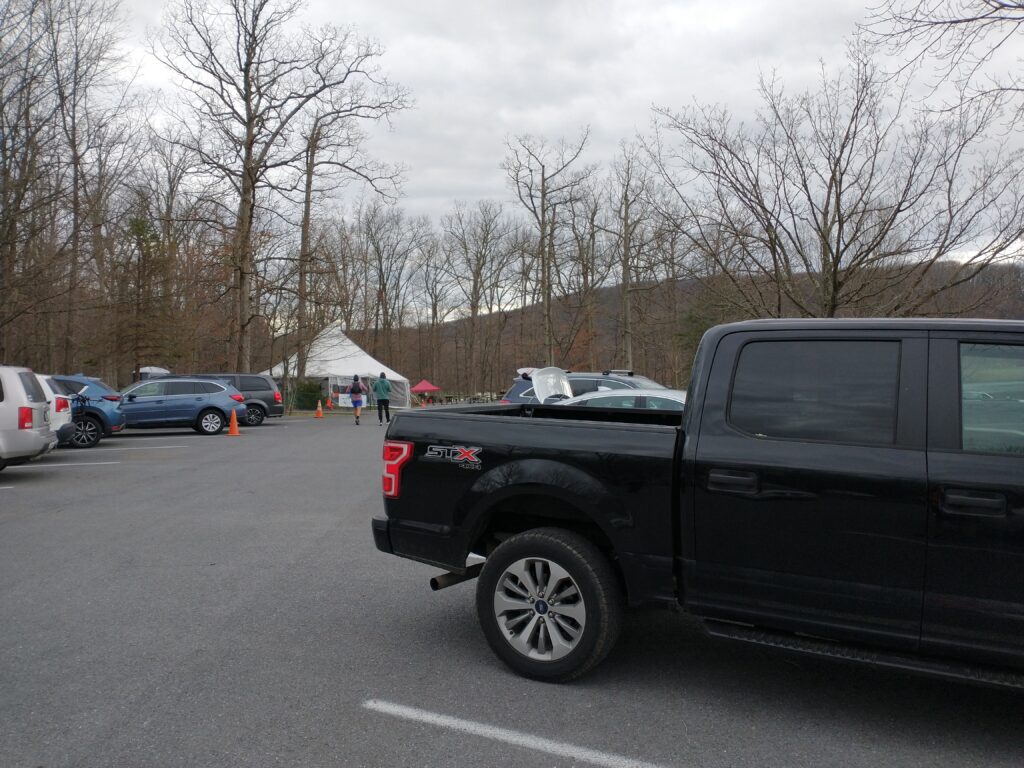
About 1:40pm, I noticed runners starting to congregate at the start line. I grabbed my gear, locked my truck, and hurried over to get in the group picture. Kevin was about halfway through his pre-race briefing when I realized he was going to talk straight through till the start of the race. I rushed into the tent to drop my key off in my drop bag thinking I wouldn’t have time later. And sure enough, after he wrapped up his chat, he nonchalantly and with a complete lack of excitement said go. Not even capital G go. No one moved so he had to say it twice more before anyone started running.

The first three mini-loops around the lake were an awesome way to start things off. The trails were flat and utterly devoid of roots and rocks. The only downside is I was moving faster than I really wanted (sub-11 minute pace) so had to force more walking than I would normally.

Once out on the big loop, the real fun began. There were quite a few turns onto different trails, which were incredibly well marked. Flagging and signs for the turns plus tape across trails you weren’t supposed to go on. Contrasting this was an almost complete lack of confidence ribbons in between turns. This was only an inconvenience the first time around on one long section about 3 miles in. As long as you pay attention at each trail cross, you should be good to go.
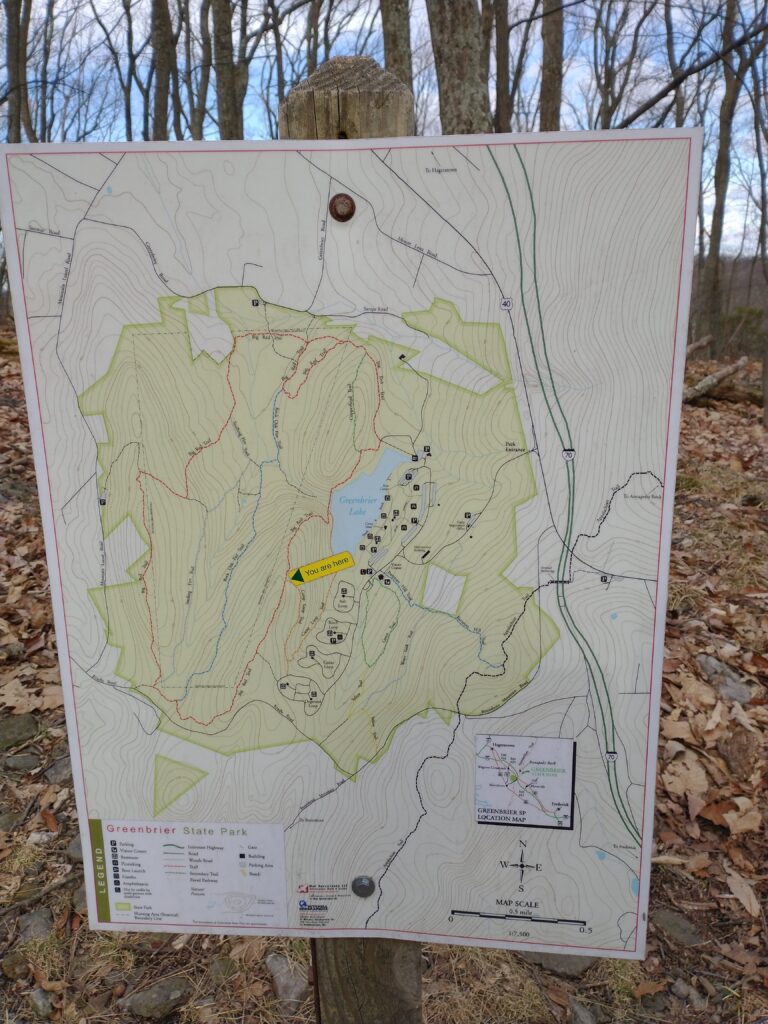
I finished up my second loop about 6pm. My splits were fast enough that I could probably get back around before nightfall, however it’s always best to error on the side of caution in hundreds so I grabbed my headlamp a little early. This ended up being a good call as I turned it on a mile or so to go in the loop. I could have made it without, however having the light reduced the chances I would trip and fall.

Speaking of which. I typically have issues with tripping and falling. Amazingly enough I was able to make it through the entire race without hitting the dirt once. I stumbled a couple times within the first several laps, but then managed to go the rest of the distance without even grazing a rock.

About 9pm, I started getting tired. Not necessarily drowsy, but not fully awake either. Most races you’re 50-60 miles in about now so this is a normal feeling. I’m definitely not used to feeling this way after only a 50k, but that’s just the way circadian rhythms work. You’ll get a boost at dawn, but you have to pay for it with a drop off in energy when you typically head to bed. Interestingly, in each of my last 2 races this low only lasted until about midnight and then I was back to feeling more alert. I guess it just takes my body about 3 hours to figure out it’s not getting any sleep so it might as well kick back into gear.
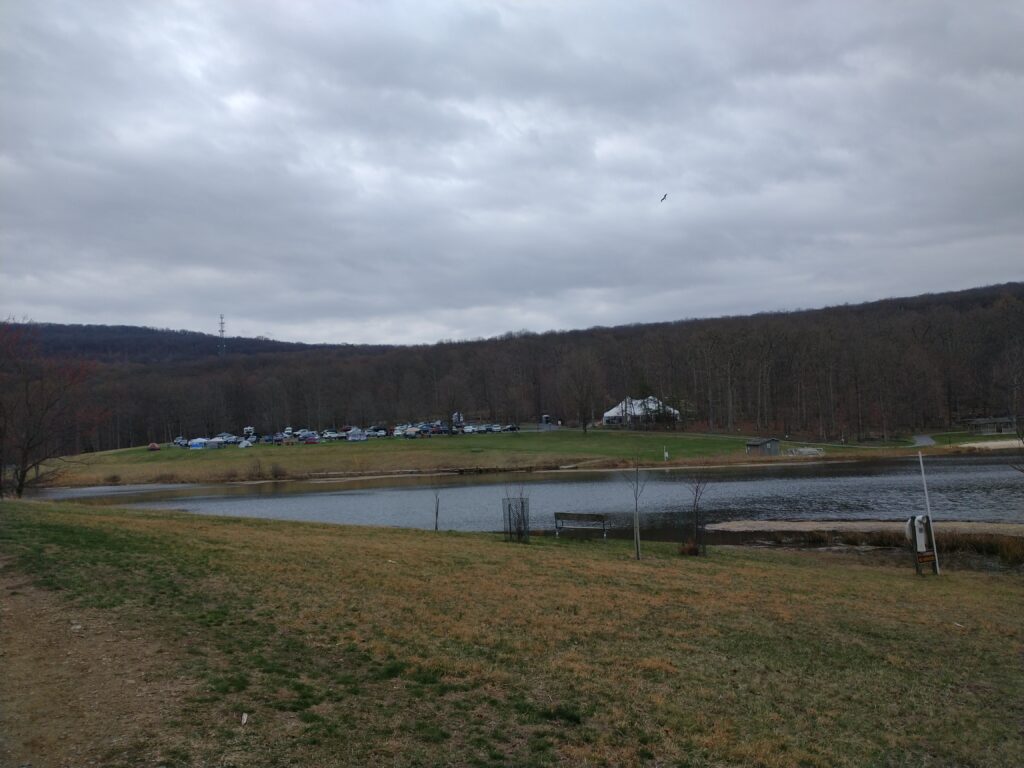
I love the overnight portions of hundreds. I’m by myself out in the middle of nowhere. My favorite tunes are blasting in my headphones. The world is reduced to the ten foot sphere of light in front of me and I can sink into the flow of just moving (slowly) along the trail.

I had thrown on an extra long sleeve t-shirt overnight and was looking forward to things warming up on Saturday morning. Only it never did. It felt about 10 degrees cooler up on the ridge lines with the wind whipping around. Each loop I would make a mental note to swap into my raincoat for added warmth once I got back to the aid station. And at the end of each loop, the sun would come out and I’d think – nah, I’m good. Only to get a little chilled again on the next lap. This happened like three times. And then it started sleeting. Thankfully it never turned to rain because if it had I would have been in trouble. Just goes to prove that no matter how many of these races I do, I’m still capable of making the same mistakes over and over again.

My tunes ran out at the start of the next to last loop. A couple miles later on I realized I was walking faster than I was “running” so switched completely over to my power hike. I then found Yoshi sitting on a log halfway up a hill 3 miles out from the aid station (in his defense, that hill sucked). I must have looked like a friendly face, because he got up to walk with me (in his defense, no one’s seeing right 22 hours into a race). He was on his last lap and I was able to pace him in to his sub-24 hour finish. It was a blast chatting with him and I was happy to provide him some company as he finished up.
The final lap was a farewell tour of the course. Goodbye first long climb. So long never-ending rocky descent. See ya later windy ridge top. Adios quad-busting downhill. Toodle-oo stream crossing. Hello finish line tent!
Running 100 miles is always such an amazing adventure. Thank you Kevin Sayers and all your amazing volunteers for putting on such a wonderful race. I don’t know when I’ll be back, but I’ll definitely be back.
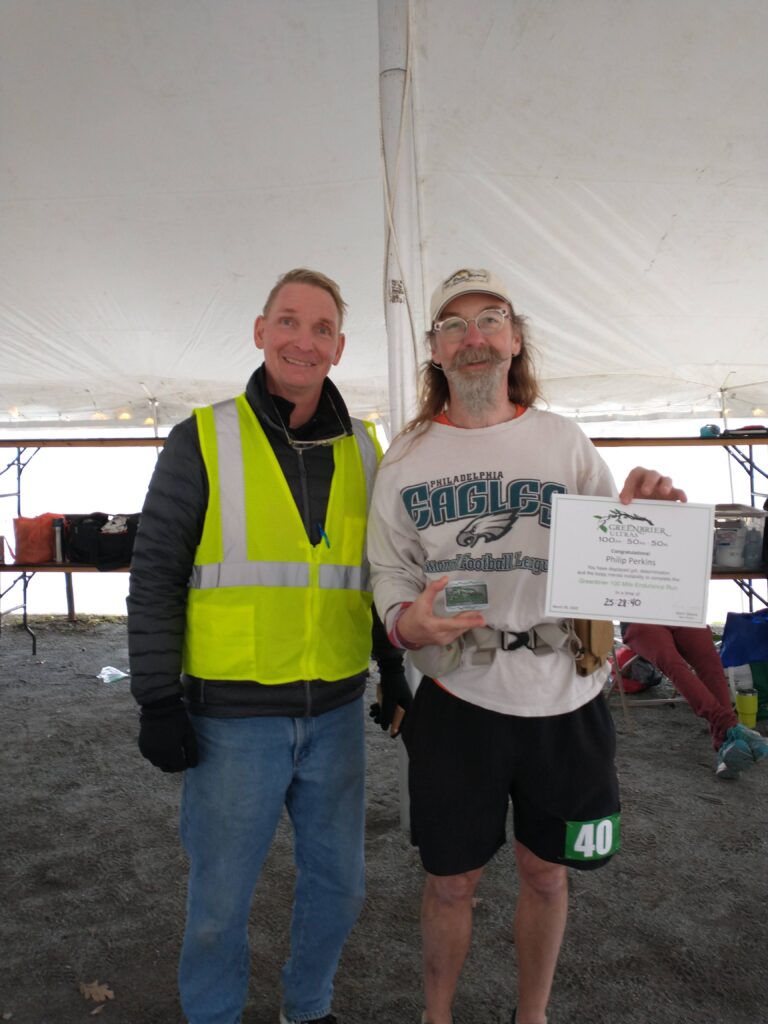
Since this race is being geared towards first time 100 milers, here’s some bonus advice to help those of you chasing your first buckle.
Advice for first time 100 milers
- Add 10-15 miles per week of fast hiking (15 minute pace) to your training schedule. You’ll most likely end up walking it in at some point and being able to “hike with a purpose” can literally save you hours on your finish time.
- Wear an extra layer of clothing. Your body will have trouble regulating its temperature as you go along making it feel colder at a given temperature than normal. I guarantee you cannot be too hot on this course in late March.
- Set a time limit on your aid station stops. I suggest no more than 5 minutes.
- Maintain an irrational belief that you can do this. Nothing you do ahead of time will prove that you can run 100 miles. It will be a complete leap of faith. Trust that you can accomplish this goal.
- Turn off your mind. Eventually though, this belief will be severely tested. Beyond that point, thinking will be counterproductive so it’s best to just stop thinking and move.
Happy trails and good luck!

Great write up and photos…and look for more confidence markers next year!
Haha. Wasn’t that big of an issue and only on the first lap.
Awesome recap – this one was on my radar but I couldn’t make it this year. Looked like a great race!
Thanks! It’s a great event and I highly recommend adding it to your calendar for 2023.